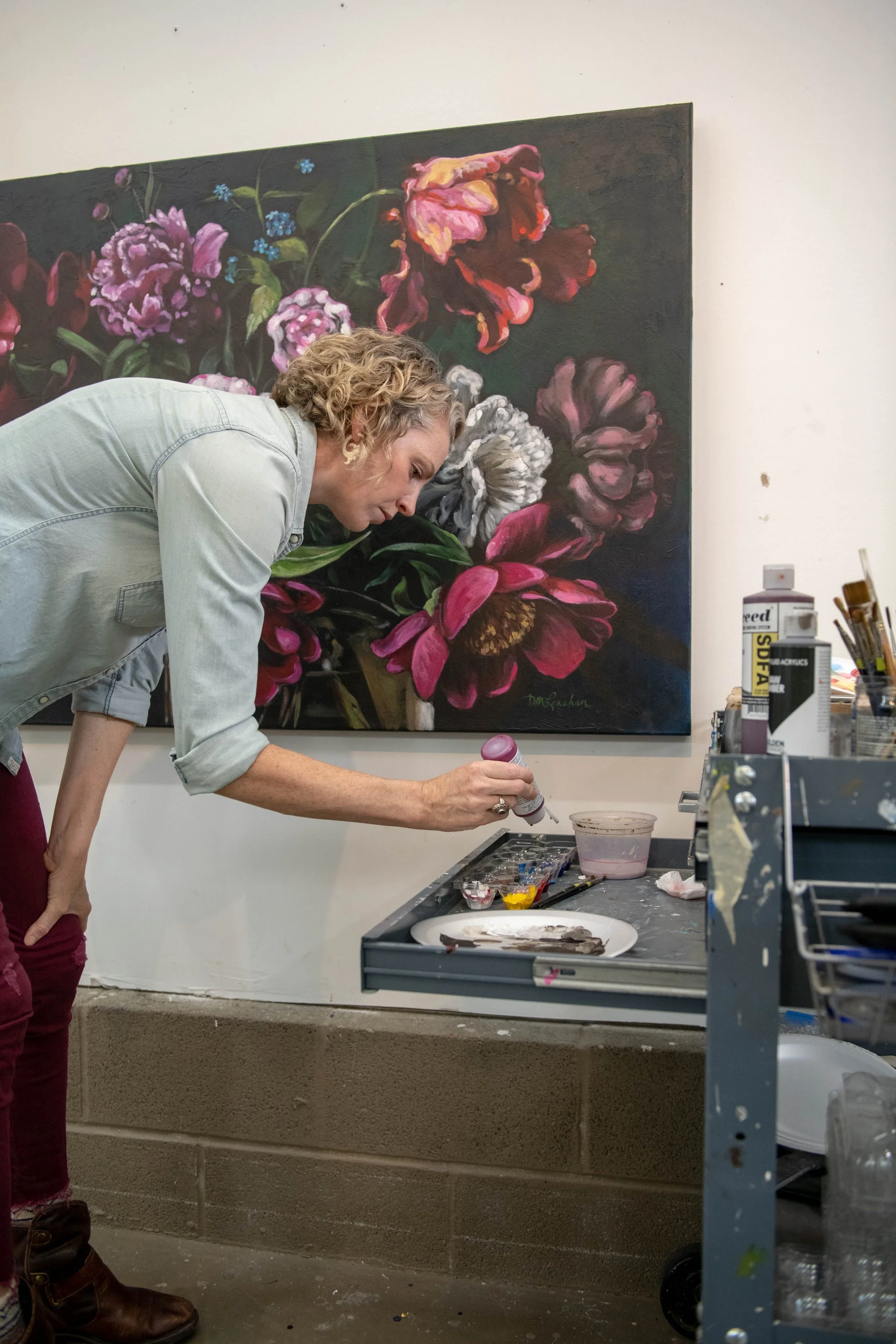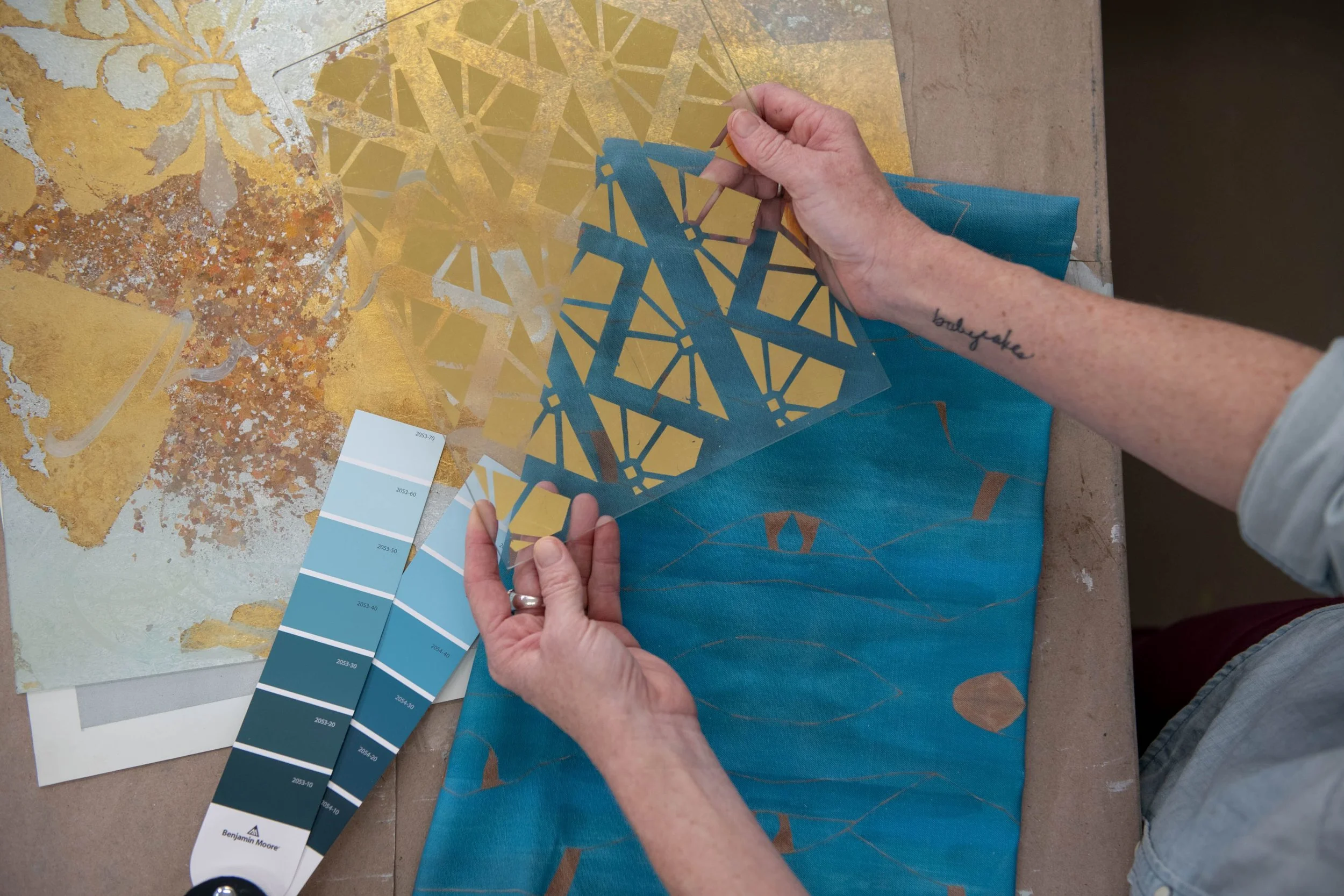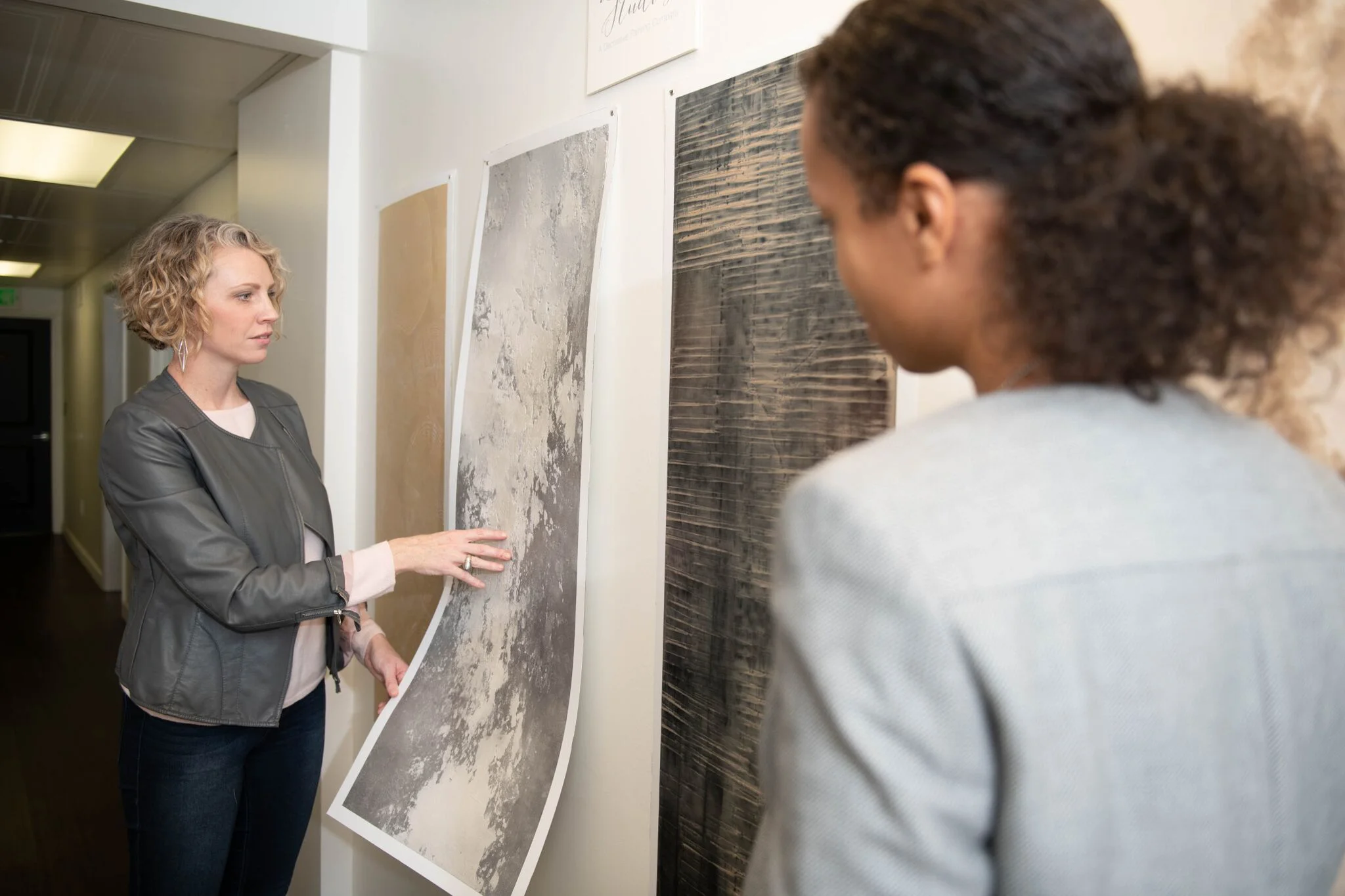It occurred to me the other day when I was talking with an interior designer I just met that I perhaps I should explain a bit about what exactly we do as “decorative artists” and how one goes about working with us . Its clear as day for me, but when I describe my profession to new people I meet I either get blank stares or confused looks. I think I need to polish my elevator speech! So first and foremost, let me describe to the world what a decorative artist is and what we do.
What is a “Decorative Artist?”
Working on a custom piece for an Interior Designer
A decorative artist is a visual artist who chooses to work with architectural surfaces in order to enhance an interior or an exterior of a building. In the strictest sense, Fine Art is considered a visual object with no functional purpose except to be admired and contemplated as an aesthetic object. Decorative Art, however, is also visual and aesthetically pleasing but serves a useful function such as a piece of furniture, tableware, textiles and so on. (source) Many artists come to this profession either by necessity or by desire. Some come to it as a day job in order to support their fine art habit. I came to it as a way of making a living doing what I love most- painting.
What does a Decorative Artist do?
Coordinating finishes, fabrics, and paint swatches.
Decorative artists are no less skilled than fine artists. We choose to work on surfaces that serve a purpose. Here is a list of types of painting we do, and surfaces we can paint:
Material: plaster, stencilling, gilding, glazing, lettering, signage, murals, trompe l’oeil, custom fine art
Surfaces: Both interior and exterior walls, ceilings, floors, furniture, cabinetry, lighting fixtures, linens, clothing, backdrops, decorative objects, glass, wood, plaster, drywall, concrete…..and I’m sure there’s more.
Training
We come together to help on projects. This Cathy Rinn’s project- a new restaurant in Washington DC.
In Europe, there are dedicated trade schools, such as The Van Der Kelen Academy in Brussels and the Ecole Sable in Versailles (where I took a class) that train decorative artists in the ways of media, surface preparation, business ethics and so on, and students graduate much like a college program. In the United States, classes are offered mainly through working studios or supply stores and last a week at the longest. we not really seen as trades people to the public, perhaps because our field is dominated by women mostly. It’s a very physically demanding job and one that requires knowledge of many different types of paints, preparation techniques, and skills of execution. Some artisans specialize in certain aspects like gilding, while others offer the whole spectrum of decorative painting to their clients.
Experience
Consulting about a project.
In my business, my experience came from my own exploration and the faith of my clients. I never worked for another company and took classes when I could afford to. I worked as an art teacher and decorative painting was my side hustle, where I worked weekends and summers until I was busy enough to paint full time. I credit my fine art background with giving me my painting skills. What I didn’t know, I chose to either take classes or educate myself through research and exploration of material. I learned a lot about how to run a business by talking with fellow decorative artists and by joining my local chapter of the International Decorative Artisans League. I credit my family for teaching me business ethics. I always want my clients to be happy so I always try to go beyond their expectations.
Up Next: The Process - How to Work with a Decorative Artist
To be kept up to date with news and events, we’d love for you to subscribe to our monthly newsletter.




